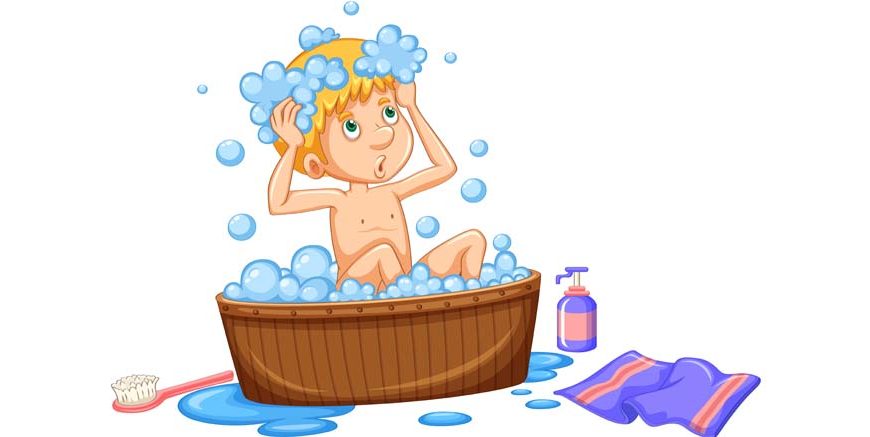Welcoming a newborn into the world is a joyous occasion, but it also comes with the responsibility of caring for their delicate needs, including hygiene. While newborns do not require daily baths, giving them a sponge bath can help keep them clean and comfortable between regular baths. A sponge bath is a gentle and safe way to cleanse your baby’s sensitive skin without the need for immersion in water. Here’s a comprehensive step-by-step guide to giving your newborn baby a sponge bath:
What is a Sponge Bath?
A sponge bath, also known as a “top and tail” bath, involves gently wiping your baby’s body with a damp sponge or washcloth instead of fully immersing them in water. It’s suitable for newborns who have not yet had their umbilical cord stump fall off or for those who are not ready for full baths.
Purpose of a Sponge Bath
- Gentle Cleansing:
- Maintaining Hygiene:
- Stimulating Circulation:
- Bonding Experience:
A sponge bath helps to remove dirt, sweat, and any residue from your baby’s skin, keeping them clean and fresh.
It helps prevent skin irritation, rashes, and infections by keeping your baby’s skin free from impurities.
Gently massaging your baby’s skin during a sponge bath can promote blood circulation and relaxation.
Giving your baby a sponge bath provides an opportunity for intimate bonding and nurturing between you and your little one.
Baby Bath Sponge
- Choose the Right Sponge:
- Keep it Clean:
Opt for a soft, hypoallergenic sponge or washcloth specifically designed for babies. Avoid using harsh or abrasive materials that could irritate your baby’s delicate skin.
Before each use, ensure the sponge is clean and free from any dirt or debris. Wash it with mild baby soap and warm water, then rinse thoroughly.
Sponge Bath Procedure
- Gather Supplies:
- Set the Scene:
- Undress Your Baby:
- Clean Face First:
- Wash the Body:
- Be Gentle:
- Clean the Diaper Area:
- Pat Dry:
- Moisturise if Necessary:
- Dress Your Baby:
Prepare everything you need beforehand, including a clean towel, mild baby soap, warm water in a basin or bowl, and a soft baby sponge or washcloth.
Choose a warm, draft-free area for the sponge bath, such as a changing table or a soft towel laid on a flat surface.
Carefully undress your baby, keeping them wrapped in a warm towel or blanket to prevent them from getting cold.
Dip a corner of the sponge or washcloth in warm water and gently wipe your baby’s face, starting from the eyes and moving outwards. Use a separate, clean part of the sponge for each area to avoid spreading dirt or bacteria.
Wet another corner of the sponge with warm water and begin washing your baby’s body, starting with the neck, chest, arms, and then the rest of the body. Pay attention to skin folds and creases, where dirt and sweat may accumulate.
Use gentle, circular motions and avoid scrubbing or rubbing too hard, as this can irritate your baby’s skin.
Lift your baby’s legs and gently clean the diaper area, wiping from front to back to prevent the spread of bacteria.
After the sponge bath, pat your baby’s skin dry with a soft towel, paying particular attention to skin folds and creases.
If your baby’s skin is dry, you can apply a gentle baby moisturiser or lotion to keep it hydrated.
Once your baby is clean and dry, dress them in fresh, comfortable clothing.
Benefits of Bath Sponge for Babies
- Gentle on Skin:
- Convenience:
- Promotes Bonding:
- Versatility:
A soft baby sponge provides gentle cleansing without stripping away natural oils or causing irritation.
Sponge baths are convenient for newborns, especially during the first few weeks when they may not be ready for full baths.
Bath time can be a bonding experience between parent and baby, fostering feelings of love, security, and trust.
Sponge baths can be done anywhere, making them ideal for travel or when access to a bathtub is limited.
What are some precautions to take care of while bathing your baby?
When giving a bath to kids, it’s essential to prioritise their safety and comfort. Here are some precautions to keep in mind to ensure a safe bathing experience:
- Supervision:
- Temperature Control:
- Avoid Slips and Falls:
- Bath Toys:
- Water Depth:
- Avoid Drowning Hazards:
- Gentle Handling:
- Use Caution with Bath Products:
- Prevent Burns:
- Teach Water Safety:
Never leave a child unattended during bath time, even for a moment. Accidents can happen quickly, so it’s crucial to stay within arm’s reach at all times.
Check the water temperature before placing the child in the tub. The water should be comfortably warm, around 37-38°C (98-100°F). Use a bath thermometer to ensure accuracy, especially for infants and young children who are more sensitive to temperature extremes.
Use non-slip mats or stickers in the bathtub to prevent slips and falls. Keep the floor around the bathtub dry to reduce the risk of accidents.
Choose age-appropriate bath toys that are free from small parts or choking hazards. Supervise children while they play with bath toys to prevent accidents or ingestion of water or toys.
For infants and young children, keep the water level shallow, covering only their bottom. As children grow older and more confident in the water, gradually increase the depth while ensuring they can still touch the bottom with their feet.
Empty the bathtub immediately after use and close the bathroom door to prevent unsupervised access to the water. Never leave buckets, containers, or any other water-filled objects within a child’s reach, as they pose a drowning risk.
Handle children with care and gentleness during bath time. Support their head and neck for infants and toddlers who may not have full control of their movements. Avoid pulling or tugging on their limbs, and be mindful of any medical conditions or injuries that may require special attention.
Choose mild, hypoallergenic bath products specifically formulated for children’s delicate skin. Avoid harsh soaps, shampoos, or bubble baths that may cause irritation or allergic reactions. Perform a patch test before using new products, especially if your child has sensitive skin or known allergies.
Keep hot water appliances, such as kettles or pots, out of reach from children during bath time. Set your water heater thermostat to a safe temperature (below 120°F or 49°C) to prevent scalds or burns.
Educate children about water safety rules, such as not diving into shallow water, not running around the pool or bathtub, and never swimming without adult supervision. Teach them basic swimming skills as they grow older, but remember that supervision is still necessary, regardless of their swimming abilities.
By following these precautions, parents and caregivers can ensure a safe and enjoyable bathing experience for children, promoting hygiene while minimising the risk of accidents or injuries.
In conclusion, a sponge bath is a gentle and effective way to keep your newborn baby clean and comfortable. By following the step-by-step guide outlined above, you can ensure a safe and enjoyable bathing experience for both you and your little one.
Looking for a nurturing environment where your child can learn and grow? EuroKids provides comprehensive early childhood education that emphasises holistic development through a blend of academics, play, and personal care. Contact us today to discover how we can support your child’s journey towards a brighter future.














